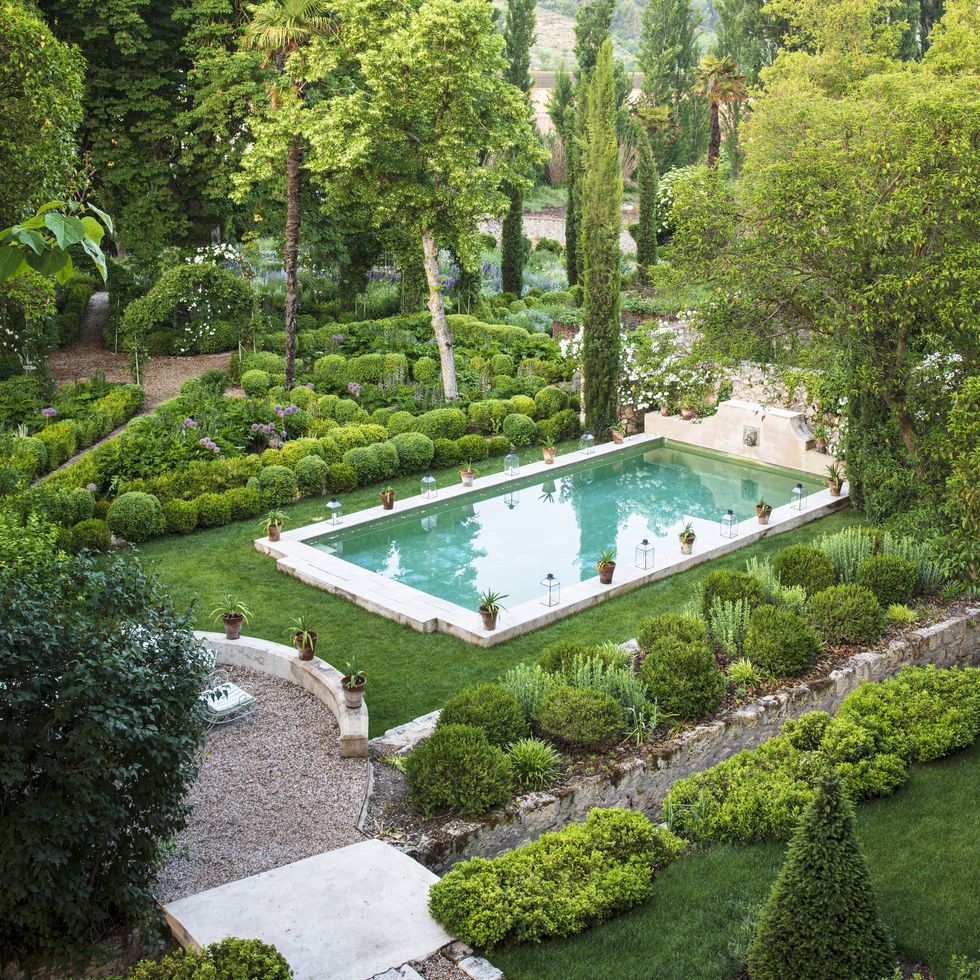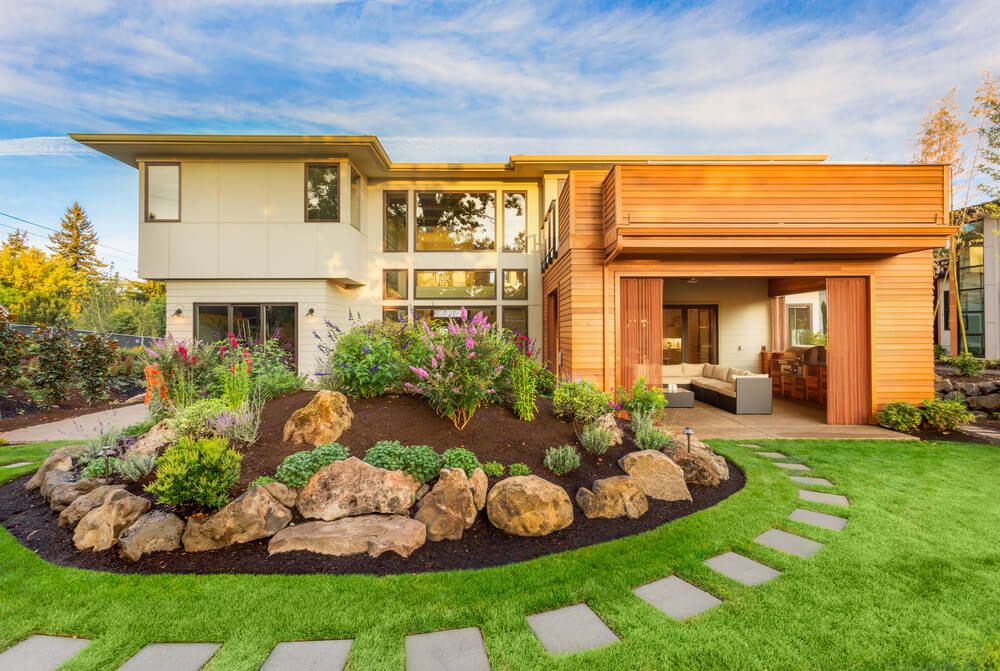Top Landscaping Companies Jacksonville: Specialist Landscaping for Every Demand
Elevate Your Residential property's Visual With Lasting Landscape Design Layouts and Eco-Friendly Practices

Benefits of Sustainable Landscaping
Carrying out lasting landscaping practices not just preserves all-natural resources but also promotes biodiversity and enhances total ecological health. One significant benefit is the decrease of water consumption through the use of drought-resistant plants, rainfall gardens, and efficient watering systems.
In addition, sustainable landscaping can enhance dirt health by reducing making use of chemical plant foods and chemicals, thus creating a much healthier setting for plant development and valuable soil microorganisms. This, consequently, improves the total durability of the landscape to endure ecological stress factors and climate modification impacts - landscaping company Jacksonville. Additionally, sustainable landscape design practices can draw in varied wild animals, consisting of pollinators like bees and butterflies, promoting an extra dynamic and well balanced ecosystem within the residential or commercial property
Incorporating Indigenous Plants
To construct upon the advantages of lasting landscaping, a calculated concentrate on including native plants can even more enhance ecological resilience and promote biodiversity within the landscape. Indigenous plants are varieties that normally happen in a certain location and have actually advanced to grow in the local climate, soil conditions, and ecosystem. By including native plants in landscape design styles, homeowner can reduce water usage, minimize the requirement for chemical pesticides and plant foods, and sustain the local wildlife population.
Including native plants also assists in preserving the unique personality and identity of a region's plants. These plants usually need less upkeep as soon as developed, making them a economical and sustainable landscaping service in the long run. In addition, indigenous plants can attract indigenous pollinators like bees and butterflies, contributing to the overall wellness of the environment.
When choosing indigenous plants for landscaping tasks, it is essential to pick varieties that are appropriate to the particular environmental problems of the site. Consulting with botanical yards or neighborhood baby rooms can offer important advice on selecting the appropriate native plants for a specific location. By integrating native plants right into landscaping layouts, residential property proprietors can develop lovely, sustainable outside rooms that benefit both the neighborhood and the setting.

Water Conservation Strategies
Reliable watering techniques play an essential role in sustainable landscaping practices, guaranteeing optimal water conservation efforts in outdoor rooms. Leak watering supplies water directly to the roots of plants, reducing evaporation and runoff.
In enhancement to innovative watering methods, xeriscaping is an additional water-saving landscaping technique that concentrates on utilizing drought-resistant plants, mulch, and efficient watering to create a low-water landscape style - bush removal Jacksonville. By choosing native plants that are fit to the local climate and dirt conditions, homeowner can lower the need for extreme watering, eventually saving water and advertising a sustainable exterior environment
Eco-Friendly Hardscaping Concepts
Enhancing exterior spaces with environmentally friendly hardscaping attributes can contribute dramatically to lasting landscaping methods. When thinking about hardscaping elements, select materials like redeemed wood, recycled concrete, or natural rock to decrease environmental effect. These products not only include a special visual allure to your outdoor space however likewise decrease the requirement for brand-new sources removal.
Executing absorptive leading options such as crushed rock or absorptive concrete can help in reducing water runoff and promote groundwater recharge. These alternatives enable rainwater to leak into the ground, stopping disintegration and decreasing the burden on stormwater systems.
Integrating native plants into hardscaping layouts can better boost eco-friendliness by sustaining regional wildlife and reducing the need for excessive watering or chemical treatments. By incorporating green walls or vertical yards, you can introduce more greenery right into city settings, improving air top quality and biodiversity.
Including energy-efficient illumination, such as solar-powered LEDs, into hardscaping styles can reduce electrical energy consumption and reduced your residential or commercial property's carbon footprint. Focusing on green hardscaping concepts not only enhances the charm of your outside area but likewise shows a commitment to environmental stewardship.
Upkeep Tips for Sustainable Landscapes

Consistently trim plants to promote healthy and balanced growth and avoid overgrowth that can lead to pest navigate to this site diseases or problems. Usage organic plant foods to nurture the soil and plants without damaging chemicals that can leach right into the atmosphere.
Conclusion
To conclude, lasting landscaping practices supply many benefits for homeowner, from improving the aesthetic appeal of the environments to advertising environmental conservation. By including indigenous plants, executing water preservation techniques, website link and utilizing environment-friendly hardscaping ideas, homeowner can produce stunning landscapes that are additionally ecologically accountable. With proper maintenance, lasting landscapes can contribute and grow to a healthier ecosystem for both humans and wild animals.
In addition, lasting landscaping can enhance soil wellness by decreasing the usage of chemical fertilizers and chemicals, consequently producing a much healthier setting for plant growth and advantageous soil organisms.To develop upon the benefits of sustainable landscape design, a tactical emphasis on including indigenous plants can even more boost environmental strength and advertise biodiversity within the landscape. By including native plants in landscape design layouts, property owners can minimize water usage, decrease the need for chemical pesticides and fertilizers, and sustain the local wildlife populace.
These plants commonly call for less upkeep once developed, making them a economical and sustainable landscape design solution in the lengthy run. By incorporating native plants right into landscaping layouts, residential property owners can develop beautiful, sustainable exterior rooms that profit both the setting and the area.